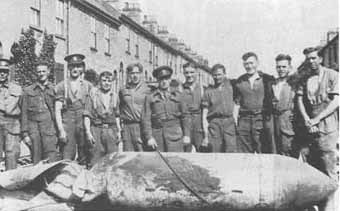Great Yarmouth History
War comes to Great Yarmouth
It started with a lone German plane scoring hits on two houses in Gordon Street killing two people, the first of 90 air raids endured, more than any other coastal town in the country. It was definitely no picnic living in Great Yarmouth during WWII. In 1941, the worst year, 109 people were killed. On the 8th April 1941 during a particularly severe air raid, an estimated 4,000 incendiary bombs fell on the town killing 17 and injuring a further 68. As if the Luftwaffe was not enough, the local council got in on the act when it was deemed necessary to demolish the Revolving Tower on the sea front to prevent its use as a landmark for German Aircrew. An understandable precaution.

By 1942 air raids had diminished but they caused a great deal of damage to the historic buildings in the walled part of the town. By 1943, in an effort to counteract low flying German bombers, Barrage balloons had become part of the scene over Great Yarmouth. Unfortunately, this precaution was not enough to prevent 49 people being killed during an air raid on the 11th May 1943.
The largest loss of life was in North Drive where 26 A.T.S girls perished when their quarters received a direct hit. By 1944 the threat from air-raids had reduced to the extent that evacuees started to return to the town.
The local council made a start on re-building, and land was purchased from Magdalen College, Oxford and used to build the Magdalen Estate, many of the streets bearing the names of the illustrious colleges of Oxford University. By July 1945 normality was seen to return as the beaches of both Great Yarmouth and Gorleston were cleared of the paraphenalia of war and re-opened to the public.